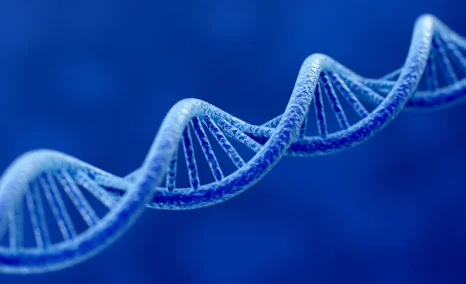VP-102: A Potential Emerging Drug for Genital Warts
Jul 11, 2022
Warts are small, benign fleshy growths of the skin or mucous membranes caused by various strains of the human papillomavirus (HPV). Genital Warts (condyloma acuminatum) are the clinical manifestations of a sexually transmitted infection caused by HPV. HPV is the most common sexually transmitted infection (STI). And although HPV isn’t completely curable, proper Genital Warts treatment can lead to eradication of the disease. Genital Warts diagnosis is based on the appearance of Warts, whereas histopathological diagnosis is not routinely indicated. Nucleic Acid Amplification Test for HPV DNA is also recommended. Accurate diagnosis is an essential first step in Genital Warts treatment. Also, PAP test, HPV tests and newer technologies like Dermatoscopy are being used.
The four morphologic types of Genital Warts – cauliflower-shaped, smooth papular, keratotic, and flat. It is estimated that anywhere between 500,000 to 1 million new cases are diagnosed each year in the United States alone, with clinically apparent warts presenting in approximately one percent of the sexually active population. Genital Warts transmission occurs by having sexual contact with someone who already has them, and may be found on the outside of genitals. Some types, which cause cancer, result in the growth of lesions on a woman’s cervix. It is possible to get Genital Warts HPV infection, even if they are not visible. They look like flesh-colored bumps that have a cauliflower-like appearance, and are usually flat, papular, or pedunculated growths on the genital mucosa, occurring in clusters. They can appear on the penis, vulva, vagina, cervix, groin, or thigh within weeks or months after sexual contact with an infected person. Potentially cancer-causing HPV strains are spread by sexual intercourse, anal sex, and oral sex. Moreover, Genital Warts is also known as anoGenital Warts (AGWs) or condylomata acuminata.
There are more than 100 types of HPV; wherein, a few strains of HPV cause warts on, in, and around genitals. In women, these warts are called “Genital Warts”. Genital Warts from HPV can eventually lead to cervical cancer. The recurrence rate of Genital Warts is estimated that about 30% of all warts will disappear within 4 months after infection. Unfortunately, long-term remission rates are largely unknown, and most Genital Warts relapse within 3 months of infection, even after proper treatment. As per the Centers for Disease Control and Prevention (CDC), 79 million Americans, most in their late teens and early 20s, are infected with HPV.
Downloads
Click Here To Get the Article in PDF
Recent Articles
An article by Patel titled “Systematic review of the incidence and prevalence of Genital Warts,” which studies the worldwide incidence and prevalence of anoGenital Warts, found that the overall (females and males combined) reported annual incidence of any anoGenital Warts (including new and recurrent) ranged from 160 to 289 per 100,000, with a median of 194 per 100,000.
The current options available for the Genital Warts treatment are largely centered upon removal of the warty growth rather than elimination of the underlying viral infection. Common medication of Genital Warts treatments include-
1) topical therapeutic agents
2) physical removal of warts with cryotherapy, electrocautery or lasers
3) photodynamic therapy
As recommended in literature as first-line topical Genital Warts treatment therapy, imiquimod and podophyllotoxin were most commonly prescribed. Also, due to the fact that interferon is expensive, and trichloroacetic acid is inconsistent, they cannot be recommended as a first-line drug for Genital Warts treatment. Furthermore, in the second treatment cycle, current literature describes a combined approach of topicals and physician-performed procedures as having a lower recurrence rate of CA. Although, it is unclear whether the combination of drugs for Genital Warts is more effective than monotherapy. The third therapeutic attempt focuses on surgical procedures and has showed a high success rate. Key companies involved in the development of Genital Warts pipeline therapies include pharma ginats such as Verrica Pharmaceuticals, Novan Inc, G&E Herbal Biotechnology , pHion Therapeutics, Orgenesis, KinoPharma, Cassiopeia, Innovax, and many others.

Verrica Pharmaceuticals Inc. (Verrica) is a dermatological treatment company that develops treatments for skin diseases that require medical intervention. The company initiated the development of VP-102 – its lead product as a proprietary topical therapy for the treatment of molluscum contagiosum, or molluscum, a highly contagious and primarily pediatric viral skin disease, external Genital Warts, and common warts. VP-102 is a topical agent that is applied to the lesions directly. It is a proprietary specification drug, and device combination of widely used topical cantharidin solutions recognized, naturally occurring agents for the treatment of local skin disorders, managed through a disposable precision applicator. In 2020, the positive results from the Phase II CARE-1 study indicated that VP-102 might provide patients and physicians with tolerable and effective treatment options. Based on the results of the Phase II trial, the company will initiate a Phase III trial of VP-102 to treat external Genital Warts and dose the first patient in the first half of 2023. The study aimed to determine the dose regimen, efficacy, safety, and tolerability of VP-102 in subjects with external Genital Warts. It is divided into two parts (Part A and Part B). The aim of Part A is to determine the two best treatment regimens for the evaluation of safety and efficacy in Part B. In Part A, Study drug (VP-102 or placebo) will be administered once every 21 days for up to four applications.

VP-102 is expected to be launched in the US for Genital Warts by 2027. According to DelveInsight, if VP-102 FDA approval takes place, the Genital Warts drug is expected to generate a revenue of USD 3 million in the same year, which is further expected to reach approximately USD 77 million by 2032. Additionally, According to DelveInsight, the Genital Warts market in the US was found to be USD 694 Million in 2017, and is expected to increase in the coming years. Rise in the increasing Genital Warts incidence along with the expected launch of emerging therapies will boost the Genital Warts treatment market in the coming years.

FAQs
VP-102 is a topical drug-device combination developed by Verrica Pharmaceuticals. It contains a 0.7% cantharidin solution, applied directly to the lesions. The treatment is administered once every 21 days for up to four applications, aiming to determine the optimal dose regimen for safety and efficacy.
VP-102 offers a non-invasive, topical treatment option that may provide a safer and more effective alternative to current therapies, which often involve physical destruction methods like cryotherapy or surgical excision.
If approved, VP-102 is projected to generate approximately USD 3 million in revenue in 2027, with expectations to reach around USD 77 million by 2032 in the U.S. market.
Downloads
Article in PDF



